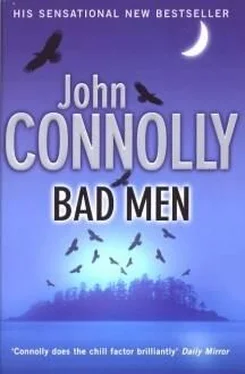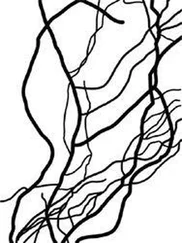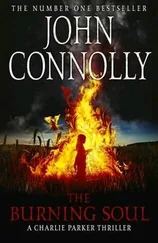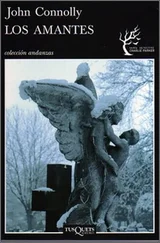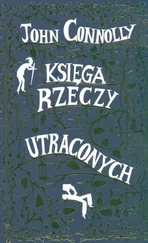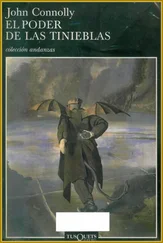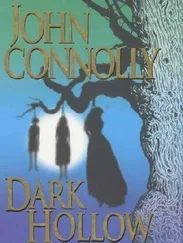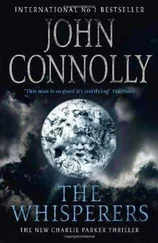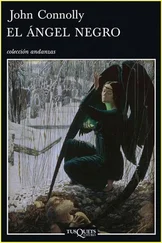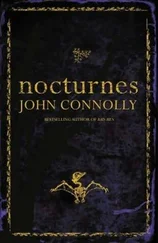“Is it okay?”
“Sure, sure. You go right ahead. I’ll follow you in soon as I get my coffee.”
Outside, daylight was already beginning to fade, igniting lights in the windows of distant houses. Jack retrieved his coffee cup from the kitchen, adding a little hot water to it to heat it up, then followed the boy into his studio. It was a small space, formerly a spare room, but Jack had transformed it by replacing one wall with sliding glass doors, so that the floor became grass that rolled slowly down until it eventually reached the trees that bordered the low cliff edge, the water beyond a dark, threatening blue. The boy was standing before the easel, looking at Jack’s latest work in progress. It was another oil, and another attempt to capture the view over the water. Another unsuccessful attempt, Jack thought. It was the uncertainty principle in action: the damn thing kept on changing, developing, and the instant he attempted to capture it, he became complicit in a lie. Still, there was something calming about the exercise, even as it drew closer and closer to failure with every movement of his hand, every stroke of his brush.
“This isn’t like the others,” said the boy.
“Hmm?” said Jack, momentarily distracted by his own failings. “What did you say?”
“I said this isn’t like the others. It’s different.”
“Different how?”
Jack joined the boy, then frowned and leaned closer to the canvas. There were marks upon it, like black streaks on the waves. He looked up at the ceiling and tried to determine if dirty water had somehow leaked down through a previously undiscovered crack, but there was nothing. The ceiling was white and unblemished.
Carefully, he reached out with a finger and touched the canvas, then drew his hand back slowly. The marks looked like paint, yet he couldn’t feel the texture of the brush strokes beneath his touch. He looked closer and saw that the black marks were under some of his own strokes, the horizontals that he sometimes used in an effort to capture the movement of the sea. Somehow, it seemed that he had managed to paint over the blemishes without noticing.
But that was impossible. There was no way that he could have failed to notice the flaws in the canvas.
He took a couple of steps back and tried to understand what the marks represented, tilting his head as he went, then pausing as he reached the threshold of the hallway. Before him, the shapes became distinguishable as forms, and he knew what they represented. He knew also that there was no way that Jack Giacomelli had been responsible for the marks on the canvas, for Jack Giacomelli never added anything to the natural landscape that was his sole inspiration.
“They’re people,” said the boy. “You’ve put people in your painting.”
The boy was right.
There were two bodies floating in the oiled waters of his painting.
The bodies of men.
The island had been quiet for so very long.
Its past slumbered gently beneath the surface, its exhalations causing the trees to sway, the waters to ripple, the dead leaves to chase one another across the grass like small brown birds in flight. It slept the way one who has endured great pain might sleep, its rest both escape and recuperation. The memory of those who had suffered and died upon it in years gone by drifted through its consciousness, so bound up with the land and the trees and the sea that it was impossible to tell if they had ever truly existed as separate entities.
But there were places on the island that were a testament to those who had once lived in its gift, and the manner of their passing had ingrained itself upon the very stones themselves. At the heart of the island, barely a mile distant from the Cove, was a small huddle of stones surrounding patches of sunken earth. Seen from the ground, their pattern was indistinct, the placement of the stones seemingly, but not quite, random. Viewed from above, the true nature of the clearing became apparent. Here were corners and fireplaces and chimneys; here were yards and outhouses and pens.
Here, once, were people.
Their end, when it came, scarred the island, and the foundations of the dwellings ran far deeper than those who had built them had ever intended or imagined, stone fusing with stone until the divisions were no longer apparent, the constructions of man and nature becoming one. Only the patterns visible from above, and the half-buried monuments surrounding a single raised cross, marked this place for what it was.
This was the Site.
For a time-fifty years in the memory of men, but barely a second in the life of the island-there had been no more killing here and the island had remained uninhabited once again, but then more men had come, men who were fleeing the consequences of their actions, for places with a history of pain and violence will sometimes draw further pain and violence to themselves. And the island tolerated their presence for a time, until at last it could take it no longer, the soil being incapable of soaking up any more blood, the stones resisting the blackening of fires set in anger.
The men who came to the island brought with them a woman, taken from Scarborough against her will. Soldiers were searching for them on the mainland, so they took to the sea, hoping to find a place in which they would be safe for a time.
They came at last to the island.
There were four men. They were armed and battle hardened. They had fought the Indians, the British, the French. They feared no one.
It was fishermen, blown off course by a storm and seeking shelter in the coves of the island, who eventually found the woman. She had built herself a little shelter in the ruins of the old village, feeding on wild fruit and birds and fish to keep herself alive, and had lit a fire in the hope of drawing help.
She had been there for two weeks, and was almost insane when they found her.
Of the men, there was no sign.
They brought her back to the mainland and she was questioned about all that had occurred. She could tell them little. On the first day, they had taken turns with her. On the second day, the men’s boat had disappeared, although they had drawn it up on the shore and lashed it to a fallen tree.
On the third day, the whispering had started.
It sounded at first like the wind in the trees, yet there was no wind blowing. The voices seemed to come from all around, and the men grew uneasy. Indistinct shapes flitted through the margins of the forest. Knowing that she could not flee, they left her tied to a tree and headed into the woods on the morning of the fourth day. After a little time had gone by, she heard gunshots.
The men did not return.
Soldiers scoured the island, for these were vicious, dangerous individuals, but only one of them was ever found. The officer who discovered him thought at first that he was looking at the carcass of a small animal, until he touched it with his rifle and felt the skull beneath the hair. They began to dig, uncovering first his scalp, then his face, until finally his arms were revealed, outstretched in a crucifixion pose, and they were able, with difficulty, to pull him from the earth.
His name was Gabriel Moser, and he had been buried alive.
Except perhaps “buried” was not the right word, for there had been no signs of disturbance at his resting place and already there was grass growing around the crown of his head.
Gabe Moser had not been buried, it seemed. Gabe Moser had been pulled down beneath the earth and had suffocated in the darkness.
The man named Joe Dupree knew all these things. He knew the history of the island, just as his father and grandfather before him had known it, and they had bequeathed that knowledge to him.
“The first one who came was named Thomas Lunt, and he brought with him his wife, Katie, and their children, Erik and Johann. That was in the spring of 1691. With them came the Leggits, Robert and Marie. Marie was pregnant at the time and would later give birth to a boy, William. Others joined them in the weeks that followed. These are their names. You must remember them. It’s important that you remember…”
Читать дальше
